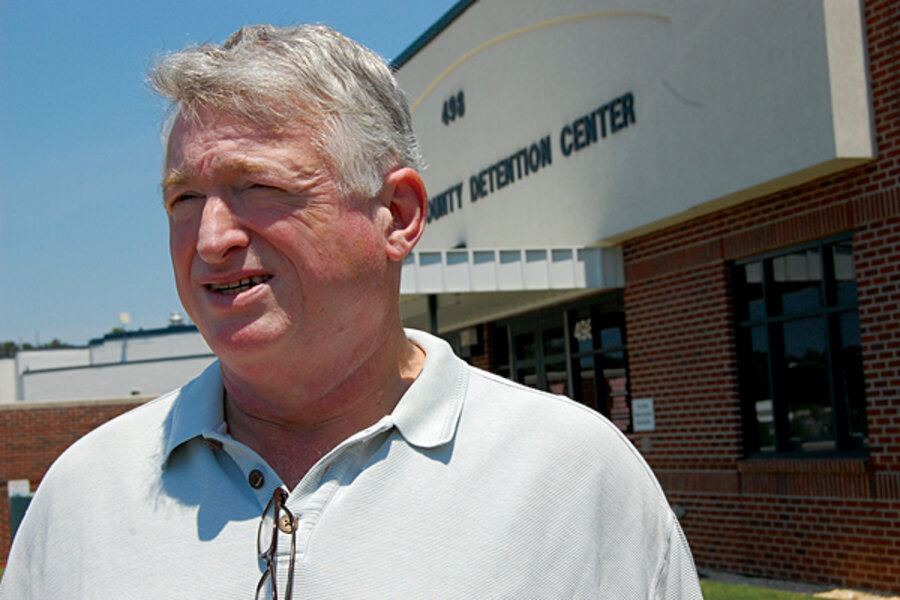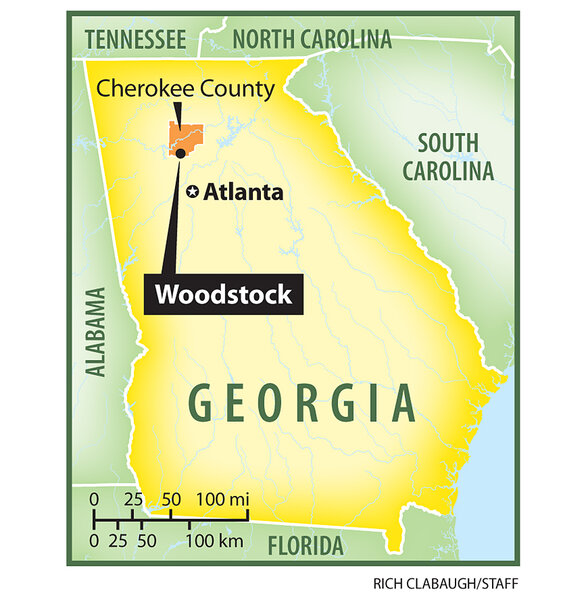Why it's so hard to win the war against US oxycodone epidemic
Loading...
| Woodstock, Ga.
In the "war on drugs," Phil Price has battled crack, methamphetamine, heroin, and pot. But the newest drug epidemic – abuse of prescription opioid painkillers – has the narcotics agent reassessing his role in policing America's hunger for illicit highs.
As head of the narcotics squad in Cherokee County in Georgia, Mr. Price has ordered his 14 agents to shift focus from meth labs and Mexican drug gangs to eyeing vans full of average Joes in search of prescriptions for a legal, but habit-forming and potentially deadly, fix: oxycodone. A pharmaceutical form of heroin, the drug is now a top seller, with 100 million prescriptions written over the past 15 years – the equivalent of 1 bottle of pills for every 3 Americans.
But fighting oxycodone abuse – an epidemic that now results in millions of overdoses and at least 11,000 deaths annually – has unique and vexing challenges.
For one, the drug is not illegal. But there are right ways and wrong ways to dispense it, though regulations vary from state to state. Large-scale dispensers, whom Price calls "drug dealers with MDs," are protected, to a point, by federal law and by powerful medical and pharmaceutical lobbies. For another, it's increasingly difficult to identify abusers. They range from retirees to high school girls, and many attempt to "doctor shop" to find a fix.
"It's far more complex than any other drug epidemic I've seen," says Price. "What it all boils down to is a societal issue, not a law enforcement issue. I don't know how we can keep everybody from doing harm to themselves."
Abuse of oxycodone is not new. The introduction 15 years ago of "miracle" drugs like OxyContin was hailed as a leap forward in the field of pain management for patients, but early on oxycodone's addictive properties became clear. Since then, not only have patients developed addictions, but recreational drug users are increasingly seeking out oxycodone, crushing the pills to negate time-release formulas and even vaporizing pills, a method called "chasing the dragon."
As demand grew, unscrupulous doctors set up shop in strip malls and began offering large prescriptions dispensed for cash. These "pill mills" popped up by the hundreds, especially in south Florida. The result is an "Oxy Express," a steady flow of users who became black market dealers, selling part of the stash in their distant hometowns to finance their addictions.
"All it takes is 1/10th of the physician population [to act unethically] to create a national epidemic," says Stanford University researcher Keith Humphreys, a former adviser to the White House's Office of National Drug Control Policy.
The overnight appearance of a pill mill in Cherokee County last year is what drew Price into the fight against the epidemic. Neighbors complained about parking lots jammed with out-of-state cars and vans. The clinic advertised on billboards and in newspapers across north Georgia, drawing the notice of police.
Price says local officials managed to "force" the clinic to move elsewhere, but no arrests were made. Subsequently, the county placed a moratorium on new "pain clinics," and towns like Woodstock are crafting tough regulations that require owners to be licensed physicians. Four remaining pain clinics in the county "are being watched carefully," says Price.
The fact that town councils are using zoning codes to thwart a drug epidemic indicates how widespread prescription opioid abuse has become – as well as how hard it is to check, says Dr. Humphreys.
But it's also a sign of the difficult debate among regulators, police, and the medical establishment as they try to squash the epidemic. "The problem we face is that policy is always a cudgel, never a rapier," he says. "In trying to solve the abuse problem, do we leave someone in a nursing home crying in pain?"
For addicts, the effects of pharmaceutical opioids can be pernicious and life-altering. One user, profiled in the 2009 television documentary "The Oxycontin Express," continued to seek out pills even after his wife and his brother died of pharmaceutical pill addictions.
More people now die of oxy abuse than of heroin, cocaine, and methamphetamine abuse combined. There were some 11,000 oxy-related overdose deaths in 2007 (the latest national figure available), a tripling since 2000, according to the Centers for Disease Control and Prevention, in Atlanta. "The number today is much worse," says Humphreys. Emergency-room visits stemming from prescription-drug overdoses doubled from 2004 to 2009, when they topped 1.2 million, report federal health officials.
This year, hospitals in the United States are reporting a surge in withdrawal symptoms in newborns. In April, oxy abuse claimed the life of the New York Rangers enforcer Derek Boogaard, who was enrolled in the National Hockey League's drug treatment program. "Batman" actor Heath Ledger died in 2008 of a drug overdose that included painkillers.
Crime appears to be a close companion of oxy abuse. In West Virginia, which has the highest rate of opioid-related deaths, adult children of elderly parents with prescriptions have installed safes to lock up their medications, convinced that otherwise their parents would be robbed. In May, authorities charged a former New York police detective with robbing several pharmacies. The detective had retired because of an injury, which in turn led to a prescription-pill addiction.
It's "the most dangerous, most addictive, and most deadly drug problem of our lifetimes," says Jim Hall of the Center for the Study and Prevention of Substance Abuse, in Fort Lauderdale, Fla.
Mike Agar, an ethnographer and long-time drug culture researcher, says that as with other epidemics, including opium and heroin, the rise in oxycodone abuse corresponds with economic travails and "political change."
In all previous epidemics he has studied, "they were populations that [were thrown] a sudden and unpleasant curve, an undelivered promise of doing better or just fine, and then someone pulled the rug out," writes Mr. Agar, in an e-mail. "Moral of the story: Narcotics, especially initial uses, are a 'give me peace' drug, a relief from anger and depression. We might well now be seeing a chapter from the same book," he adds, given "economic collapse, jobs, housing, education for the kids, health care, a kid in Iraq or Afghanistan."
Partly in response to opioid abuse, 38 states now have prescription-monitoring programs to try to crack down on "doctor shopping" by users who supply the black market. This fall, Florida begins implementing a new prescription-monitoring program and new licensing requirements for pain clinics in a bid to curb the ready supply, even as the state is considering 500 new pharmacy applications.
One sign of a political shift: After opposing a prescription-monitoring program as government overreach, Florida Gov. Rick Scott (R) relented once it became clear that even small-government tea partyers saw the problem as serious enough to require more government oversight. The Obama administration has also kicked in some extra money for drug-abuse prevention and treatment. Whether new policy and enforcement measures will actually curb abuse remains a question.
"It's going to be an expensive proposition in terms of lives and the cost and the critical need for more treatment opportunities," says Mr. Hall. But without a more concerted national effort, he adds, "we're going to have increasing crime rates and more tragic consequences."






